- 09
- Dec
Co je aktuální?
Jaký je elektrický proud? Nejprve si připomeňme, jaká je definice proudu, kterou jsme se naučili?

Quite simply, the directional movement of charged particles in a conductor is an electric current.
Pouze když má látka nabité částice, které se mohou volně pohybovat, může přenášet elektrický proud – tedy vést elektřinu. Tyto nabité částice, které se účastní vedení, se nazývají přenašeče. Například u kovů mohou jako nosiče působit pouze vnější elektrony atomů.
„Směrový pohyb“ v definici elektrického proudu je často nepochopený. Mnoho lidí si myslí, že se to týká pohybu s určitým směrem, samozřejmě že ne! Nemění se směr pohybu elektronů ve střídavém obvodu?
Ve skutečnosti je orientační běh relativní k „náhodnému pohybu“!
Since electrons are microscopic particles, they must be in thermal motion all the time. Thermal motion is a random motion, as shown in the figure below. 
Tento pohyb je ve skutečnosti velmi rychlý. Například v kovech při pokojové teplotě je rychlost elektronického tepelného pohybu v řádu stovek kilometrů za sekundu!
Když se pozorně podíváte na tento náhodný pohyb, zjistíte, že směr pohybu každé částice je v každém okamžiku náhodný. Pokud sečtete vektory rychlosti těchto částic, je výsledek téměř nulový.
Nyní přidejte k vodiči elektrické pole a elektron superponuje směrový pohyb na základě náhodného pohybu. Za předpokladu, že elektrické pole je po určitou dobu vlevo, vypadá pohyb elektronů následovně. Červené kuličky představují atomy kovu na krystalové mřížce a rychle se pohybující tečky představují volné elektrony. 
Does it look fast? That’s because electronic movement is really fast! But in fact, the random motion, which accounts for a large proportion of it, does not contribute to the current. When the random motion is eliminated, the rest is just like the slow look below.
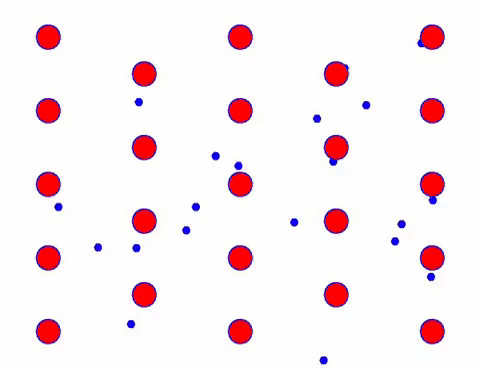
Indeed, the directional movement of electrons is much slower than the speed of thermal movement. This “grinding” movement of electrons is called drift, or “drift”. Sometimes, electrons will run in the opposite direction because of collisions with atoms. But in general, electrons move in one direction.
If the electric field changes direction, the direction of electron drift will also change.
Therefore, this kind of directional movement means that the sum of the speeds of all the electrons participating in the conduction at a certain time is not zero, but is generally in a certain direction. This direction can be changed at any time, and that is the case of alternating current.
Proud tedy není ani tak „směrový pohyb“ elektrického náboje, jako spíše „hromadný pohyb“ elektrického náboje.
The magnitude of the current in the conductor is expressed by the current intensity. The current intensity is defined as the amount of electricity passing through the cross-section of the conductor in a unit time, namely
We have learned some physical quantities that contain the word “intensity”, such as electric field intensity and magnetic induction intensity. They generally represent the apportionment per unit time, unit area (or unit volume, unit solid angle). However, the word “intensity” in the current intensity does not reflect the current apportionment of the area.
Ve skutečnosti je za distribuci proudu do oblasti zodpovědná jiná fyzikální veličina, kterou je proudová hustota.
Protože podstatou elektrického proudu je směrový pohyb elektrického náboje, musí existovat určitý vztah mezi intenzitou proudu a rychlostí driftu!
Abychom získali tento vztah, musíme nejprve objasnit koncentraci koncept-nosič, tedy počet nosičů v jednotkovém objemu, který je vyjádřen .
Předpokládá se, že průřez vodiče je, koncentrace nosiče je, driftová rychlost je a nabitý náboj je.
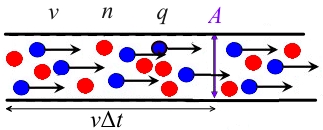
Pak je náboj ve vodiči na levé straně povrchu a tyto náboje projdou povrchem za určitou dobu, takže
Jedná se o mikroskopické vyjádření intenzity proudu.
Current density is the apportionment of current to area, so the magnitude of current density is, but it is defined as a vector, and the direction is the direction of the drift velocity vector of the positively charged carriers, so the drift of electrons in the metal can be obtained from this Speed, as an example below.
Consider a copper wire, assuming that each copper atom contributes an electron as a carrier. There is 1 mol of copper, its volume is, molar mass is, density is, then the carrier concentration of the copper wire is
Where is Avogadro’s constant. The density of copper is found, and the value obtained by substituting is about unit/cubic meter.
Za předpokladu, že poloměr měděného drátu je 0.8 mm, protékající proud je 15A, = 1.6 C a driftová rychlost elektronů se vypočítá jako
Je vidět, že rychlost driftu elektronů je skutečně velmi malá.
Pro ty, kteří studují obvody, je výše uvedená úplná definice proudu.
Ale ve fyzice je výše uvedená definice proudu ve skutečnosti pouze úzkou definicí. Obecnější proudy nejsou omezeny na vodiče, pokud je pohyb elektrických nábojů proudem. Když se například elektrony atomu vodíku pohybují kolem jádra, vzniká na jeho dráze elektrický proud.
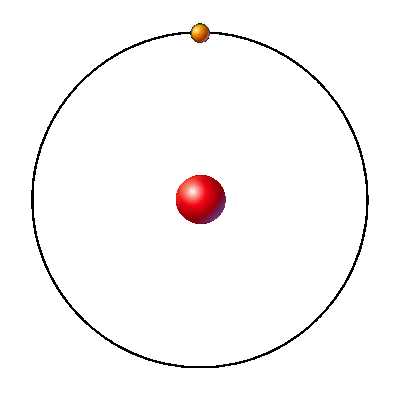
Předpokládejme, že množství elektronického náboje je a doba pohybu je. Potom pokaždé, když to uplyne, projde jakýmkoli průřezem smyčky tak velké množství náboje, takže intenzita proudu je založena na vztahu mezi periodou, frekvencí a úhlovou rychlostí a proud lze také vyjádřit jako
For another example, a charged metal disk, rotating around its axis, also forms loop currents with different radii.

Tento druh proudu není normální vodivý proud a nemůže generovat Jouleovo teplo! Nelze vytvořit skutečný obvod.
Otherwise, would you give me a calculation of how much joule heat is generated per second by the electrons of the hydrogen atom?
Ve skutečnosti proud ve vakuu nesplňuje Ohmův zákon. Protože pro elektrický proud vzniklý pohybem nabitých částic ve vakuu nedochází ke kolizi nosičů podobně jako mřížka v kovu, takže vakuum nemá žádný odpor a žádnou vodivost.
Pohyb elektrických nábojů vytváří elektrický proud a samotný elektrický náboj budí elektrické pole. To snadno způsobí nedorozumění. Mnoho lidí si proto myslí, že elektrické pole nabitých částic, které tvoří elektrický proud, musí být vystaveno. Ale ve skutečnosti pro vodivý proud v obecném vodiči proudí nosiče na pozadí složeném z velkého počtu kladně nabitých kovových iontů a samotný vodič je neutrální!
Tento druh speciálního proudu často nazýváme „ekvivalentní proud“. Ekvivalent zde znamená, že generuje magnetické pole na stejném základě jako obyčejný vodivý proud!
Připomenutí: Nezaměňujte zde „ekvivalentní proud“ s „ekvivalentním obvodem“ v analýze obvodu
Ve skutečnosti, když jsme poprvé studovali magnetické pole, elektrický proud v Biot-Saffarově zákoně byl zobecněným elektrickým proudem, který obsahoval tento ekvivalentní proud. Samozřejmě, že vodivostní proud v Maxwellových rovnicích také odkazuje na zobecněný proud.
Those who have studied the photoelectric effect know that when the photoelectron drifts from the cathode to the anode, if the influence of air is ignored, this current is caused by the movement of electric charges in the vacuum, and there is no resistance, so it is not restricted by Ohm’s law.
Je to tedy jediná věc o elektrickém proudu ve fyzice?
Ne! Existují také dva typy, a to magnetizační proud a posuvný proud.
Jsou to také dva ekvivalentní proudy, které, jak název napovídá, jsou také zavedeny pro vysvětlení magnetismu. Jinými slovy, vymanili se ze základní charakteristiky současného „pohybu náboje“!
That’s amazing! There is no electric charge movement, so why can it be called an electric current?
Neboj se a poslouchej mě pomalu.
Let’s look at the magnetizing current first.
Bylo zjištěno, že magnetismus je způsoben pohybem elektřiny (prozatím se nebere v úvahu vysvětlení magnetismu vnitřními vlastnostmi rotace). Aby vysvětlil přirozený magnetismus, francouzský fyzik Ampere předložil hypotézu „molekulární cirkulace“. 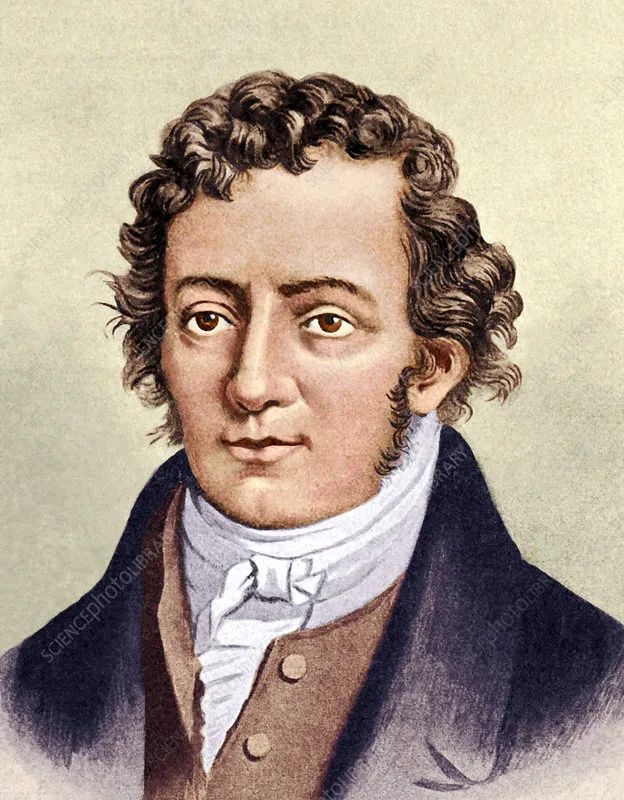
Jak je znázorněno na obrázku níže, jakýkoli atom nebo molekula může být považována za atom nebo molekulu, která má elektrický náboj rotující kolem středu a tvořící malý smyčkový proud, tedy „molekulární cirkulaci“.
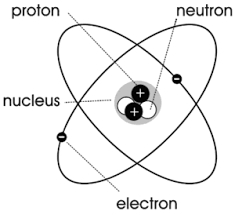
Podle zákona, že elektrický proud budí magnetické pole, bude tato molekulární cirkulace produkovat fyzikální veličinu zvanou magnetický moment. Jeho velikost je plocha ohraničená molekulární cirkulací vynásobená ekvivalentním proudem molekulární cirkulace a její směr je v pravotočivé spirále se směrem cirkulace, tj.
Je zřejmé, že směr magnetického momentu je přesně podél směru magnetického pole tvořeného cirkulujícím proudem
. 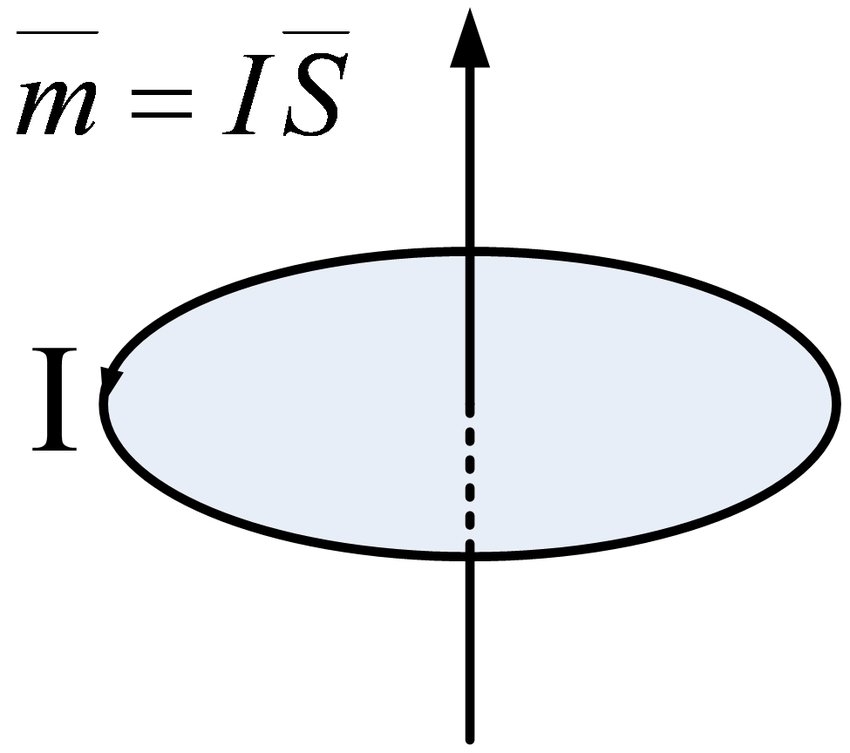
Under normal circumstances, the arrangement of the molecular circulation of a substance is chaotic, so the substance is not magnetic, as shown on the left side of the figure below. When subjected to an external magnetic field, these molecular circulations will be approximately neatly arranged. As shown on the right side of the figure below, their magnetic moments are arranged in one direction as much as possible, just like countless small magnetic needles gathered together to form a total magnetic field, and the whole material composed of them becomes magnetic.
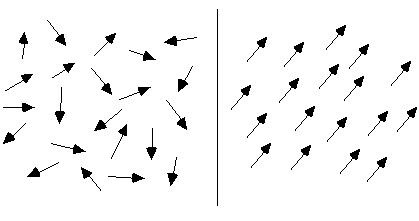
Suppose there is a cylindrical magnet, the inner molecular circulation is neatly arranged, and the sections of each molecular circulation at the edge of the magnet section are connected together to form a large circulation, as shown in the figure below. 
Na základě toho si můžeme myslet, že tyčový magnet je jako solenoid pod napětím. Jinými slovy, na povrchu magnetu je zamotaný neviditelný proud! Tento druh proudu nelze připojit a použít. Je omezena na povrch magnetu. Říkáme tomu „vazebný proud“ nebo „magnetizační proud“.
Therefore, the magnetizing current is a current, because it is the same as the current formed by the movement of real electric charges, which can equivalently generate a magnetic field!
Podívejme se znovu na posuvný proud.
According to the Ampere’s loop theorem, the integral of the magnetic field strength on a closed path is equal to the flux of the current density on any curved surface bounded by this path, that is, this theorem is called Stokes’ theorem in mathematics. It tells us that the integral of a vector along any closed path must be equal to the flux of its curl (here) to any surface bounded by the closed path.
Protože jde o matematickou větu, musí být vždy správná, protože matematika je logický systém založený na axiomech.
Therefore, the Ampere Loop Theorem must always hold!
Talentovaný skotský fyzik Maxwell však zjistil, že když čelil nestabilnímu proudovému obvodu, teorém Ampérovy smyčky byl rozporuplný.
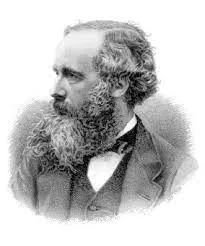
The typical unstable current occurs during the charging and discharging of the capacitor. As shown in the figure below, there is an unstable current during the short period of capacitor charging.
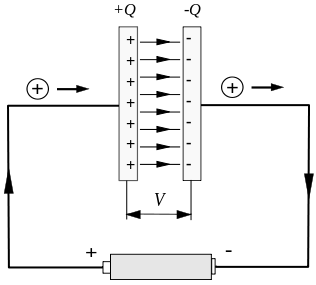
Ale obvod je odpojen mezi deskami kondenzátoru, což způsobí vážný problém.
Předpokládejme, že uvažujeme uzavřenou cestu, která obchází drát, jak je znázorněno na obrázku níže, kruh označený C a zakřivený povrch s ním jako hranici lze libovolně vybrat. Na obrázku je vybrána kruhová rovina ohraničená samotným C a přes kondenzátor. Zakřivený povrch levé desky. 
According to the circular surface, it can be seen that according to the curved surface, but as a loop integral of the magnetic field strength, its value should be determined!
Jak to udělat?
Maxwell believes that the Ampere’s loop theorem must be established. Now that there is a problem, it must be because a part of the current has not been discovered by us before, but it does exist!
Jak tedy zjistit tuto část proudu?
Since the problem is between the plates, start from between the plates.
Prostřednictvím analýzy Maxwell zjistil, že bez ohledu na nabíjení nebo vybíjení existuje mezi deskami kondenzátoru vždy fyzická veličina, která je synchronizována s velikostí a směrem proudu. Je to časová derivace toku vektoru elektrického posunutí, to znamená, že je definována jako proud posunutí.
If it is considered that this part is the part of the current that has not been discovered before, then the complete current is now. That is to say, although the circuit between the plates is disconnected, the derivative of the electric displacement flux and the sum of the current together, as a whole , Ensure the continuity of the current at all times.
Going back to the previous contradiction, we now know that, according to the requirements of Stokes’ theorem, when calculating the flux of current density for a closed surface, the density of displacement current should also be considered, that is, the complete ampere loop theorem is therefore, By “discovering” this new current component, the crisis of the Ampere Loop Theorem is resolved!
The reason why “introduction” is not used here, but “discovery” is used here. What I want to emphasize is that this kind of current is not a mathematical compensation, but a real thing, but it has not been discovered before.
Proč vůbec existuje? Protože se chová jako elektrický proud, jako vodivý proud, excituje magnetické pole ekvivalentně, kromě toho, že nedochází k žádnému pohybu elektrických nábojů, není potřeba žádný drát a nemůže vznikat žádné Jouleovo teplo, takže to bylo ignorováno!
But it actually exists by itself, just keep a low profile, it has been silently exciting the magnetic field there all the time!
Jinými slovy, když čelíme magnetickému poli, původní definice proudu je příliš úzká. Podstatou elektrického proudu není pohyb elektrického náboje, mělo by to být něco, co dokáže vybudit magnetické pole.
So far, the several forms of current have been introduced. They all exist objectively, and what they have in common is that all currents can equally excite the magnetic field.
